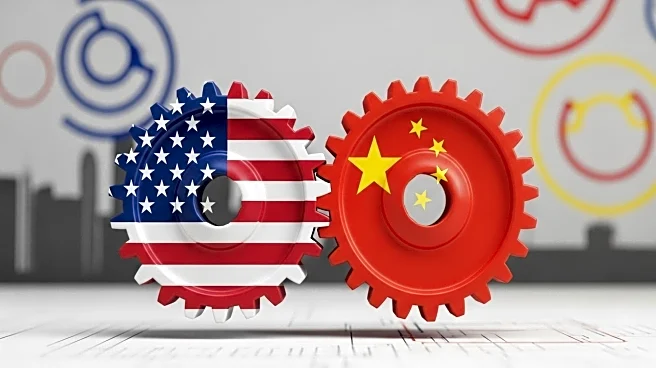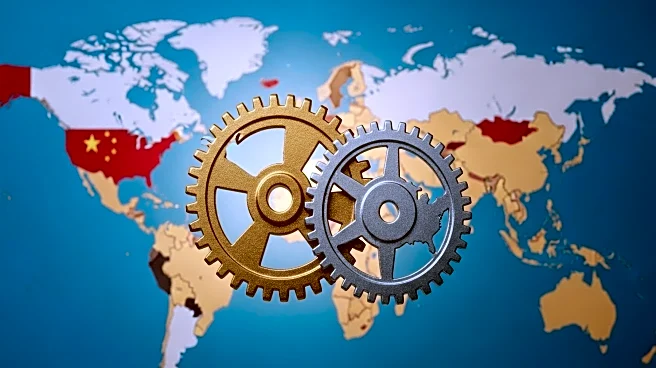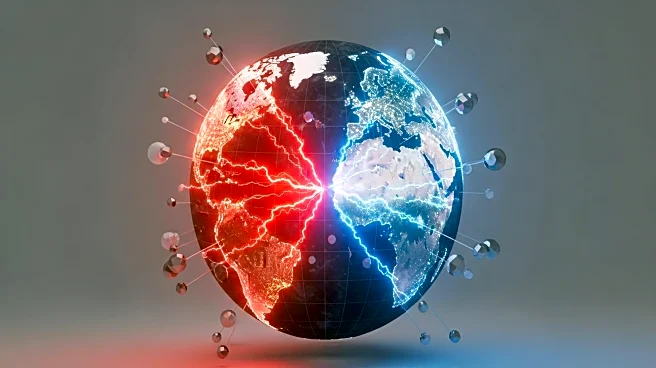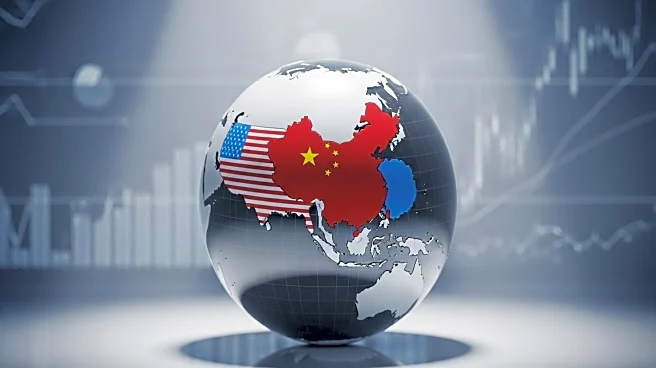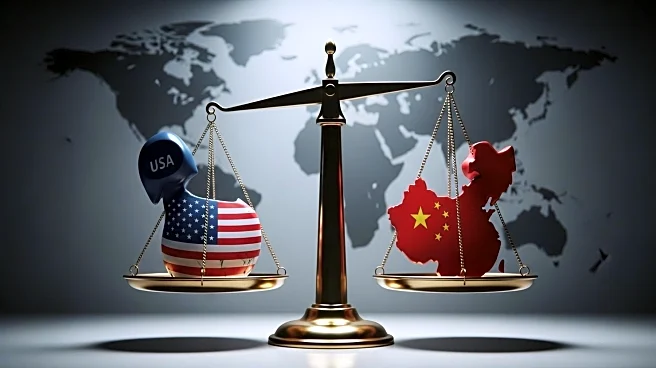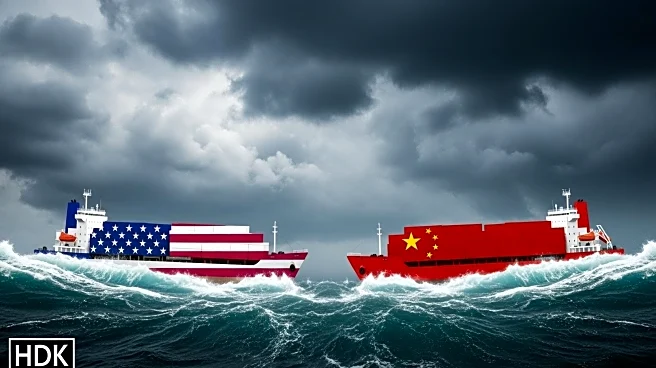What is the story about?
What's Happening?
President Trump has announced that the United States will impose new tariffs on imports from China starting November 1. This decision comes as a response to China's plans to implement export controls on various goods, including rare-earth-related products and technology. The tariffs will be set at 100% and will add to the existing duties on Chinese goods. Additionally, President Trump mentioned plans to impose export controls on critical software, although details on this were not provided. The announcement follows China's Ministry of Commerce's decision to restrict exports of manufacturing equipment, lithium batteries, and graphite anode materials, effective November 8. This development reignites trade tensions between the U.S. and China, which had seen a temporary cooling off period earlier this year.
Why It's Important?
The imposition of new tariffs by the U.S. is significant as it marks a renewed escalation in trade tensions with China, potentially impacting global supply chains and economic relations. The rare earth materials targeted by China's export controls are crucial for various industries, including technology and defense, making the U.S. response critical for maintaining access to these resources. The tariffs could lead to increased costs for American businesses relying on Chinese imports, affecting pricing and competitiveness. Furthermore, the move may influence ongoing negotiations between the two countries, with potential repercussions for international trade agreements and economic stability.
What's Next?
With the new tariffs set to take effect on November 1, businesses and policymakers will be closely monitoring the situation for any further developments. The U.S. and China had previously agreed to lower tariffs during a 90-day pause, which was extended to November 10, but the latest actions cast doubt on the likelihood of reaching a comprehensive trade agreement soon. President Trump had planned to meet with China President Xi Jinping at the APEC summit in South Korea, but the recent developments may alter diplomatic engagements. Stakeholders in affected industries may seek alternative sources for rare earth materials and adjust their strategies to mitigate the impact of the tariffs.
Beyond the Headlines
The trade tensions between the U.S. and China highlight the broader geopolitical struggle for technological and economic dominance. The focus on rare earth materials underscores their strategic importance, as they are essential for manufacturing high-tech products and military equipment. The situation may prompt discussions on the need for diversifying supply chains and investing in domestic production capabilities to reduce dependency on foreign sources. Additionally, the trade dispute could influence global economic policies and alliances, as countries navigate the complexities of international trade and economic security.
AI Generated Content
Do you find this article useful?


